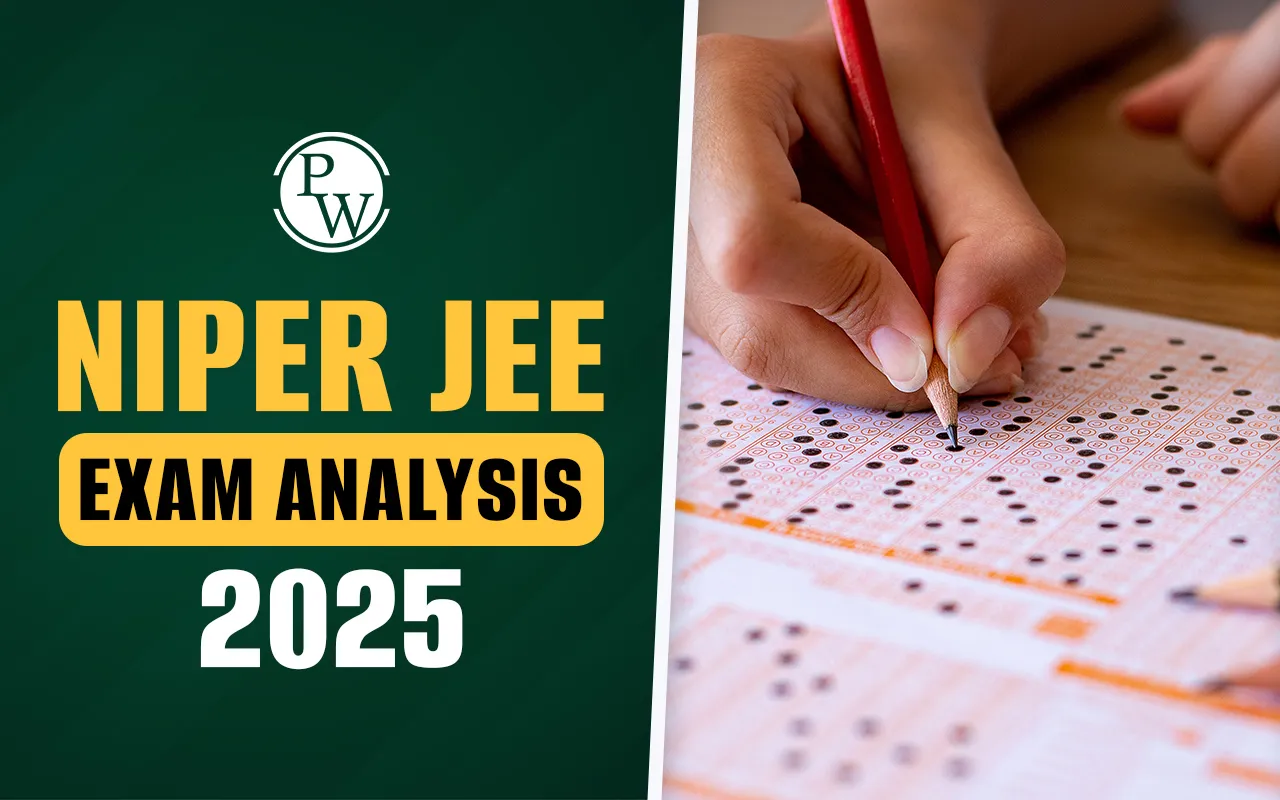
NIPER JEE 2025 exam analysis provides an in-depth review of the entrance test held on 10 June 2025 in computer-based mode. Conducted by the National Institute of Pharmaceutical Education and Research (NIPER), this exam is crucial for M.Pharm, M.Tech (Pharma), and PhD admissions. Candidates faced a total of 200 multiple-choice questions, each carrying 0.5 mark, with a negative marking of −0.125 for each incorrect answer. The questions spanned core pharmaceutical sciences, chemistry, biology/biotech, and general aptitude. This analysis covers overall and subject-wise difficulty, ideal number of good attempts, expected cut-offs, and expert insights based on student reactions and exam patterns observed across test centers.
To understand the structure and marking logic of the NIPER JEE 2025 Exam, it’s essential to look at the official exam format followed this year. The exam was held in a computer-based mode across designated centers, testing candidates on a wide range of pharmacy-related topics along with aptitude. The key details such as number of questions, marking scheme, duration, and subjects covered are summarized below to help candidates analyze the paper pattern and align their performance expectations accordingly.
|
NIPER JEE 2025 Exam Analysis Overview |
|
|
Particulars |
Details |
|
Exam Name |
|
|
Conducting Body |
National Institute of Pharmaceutical Education and Research (NIPER) |
|
10 June 2025 |
|
|
Mode of Exam |
Computer-Based Test (CBT) |
|
Total Questions |
200 MCQs |
|
Total Marks |
100 |
|
Question Type |
Multiple Choice Questions (MCQs) |
|
Marking Scheme |
+0.5 for correct answer, −0.125 for incorrect |
|
Exam Duration |
2 hours (120 minutes) |
|
Medium |
English |
NIPER JEE 2025 exam was held to test the ability of candidates across a mix of domain-specific and general sections. As per student feedback and expert reviews, the difficulty level varied section-wise. The Pharmaceutical Sciences section was identified as moderate to difficult, with certain heavy concept and application-based questions. The Chemistry section was moderately balanced, focusing on both organic and inorganic concepts.
Biology/Biotechnology was comparatively simpler, with straightforward questions from basic molecular biology and microbiology. The General Aptitude and English section was considered the easiest, with basic logical reasoning, quantitative aptitude, and grammar questions. Below is a section-wise difficulty level table to help you better understand how each subject area was perceived in terms of toughness.
|
Section-Wise Difficulty Level |
|
|
Subject Area |
Difficulty Level |
|
Pharmaceutical Sciences |
Moderate to Difficult |
|
Chemistry |
Moerate |
|
Biology/Biotechnology |
Easy to Moderate |
|
General Aptitude & English |
Easy |
The NIPER JEE 2025 exam saw a balanced mix of conceptual and application-based questions across all sections. Based on student feedback and memory-based responses, the paper tested both fundamental understanding and advanced problem-solving skills. Below is a subject-wise overview of the key areas from which questions were asked:
Pharmaceutical Sciences: Questions were concept-heavy, especially in pharmacology, medicinal chemistry, and pharmaceutics. Some questions had close answer choices.
Chemistry: Mostly NCERT-level Organic and Physical Chemistry with few tricky numerical questions.
Biology/Biotech: Focused on basics of cell biology, molecular biology, and genetics.
Aptitude & English: Questions were straightforward, including comprehension, synonyms, logical reasoning, and basic math.
Note: This difficulty level is based on student feedback and exam experience, as NIPER does not release an official section-wise analysis.
Based on student feedback and expert analysis, the good attempts in NIPER JEE 2025 indicate the number of questions a candidate should have ideally attempted with reasonable accuracy to stay within a safe score range for qualifying. The exam had a total of 200 MCQs across sections such as Pharmaceutical Sciences, Chemistry, Biology/Biotechnology, and General Aptitude & English. Below is the section-wise safe attempt range:
|
Good Attempts in NIPER JEE 2025 |
|
|
Section |
Good Attempts (Safe Range) |
|
Pharmaceutical Sciences |
70-80 |
|
Chemistry |
40-45 |
|
Biology/Biotechnology |
25-30 |
|
Aptitude & English |
30-35 |
A total of 160–170 attempts with 85%+ accuracy would be considered good to stand a competitive chance for top NIPERs like Mohali, Hyderabad, or Ahmedabad.
Note: The number of good attempts is estimated based on student reviews and expert observations. Actual qualifying scores may vary.
NIPER JEE 2025 expected cut off has been mentioned here based on exam difficulty, student performance, and past admission trends at various NIPER institutes. As the official cut-offs will be released along with the NIPER JEE 2025 results, these insights provide a general idea of the minimum marks likely required for securing admission in top institutes. The cut-offs vary each year based on the number of applicants, seat availability, and category-wise performance. Below is the expected cut-off range for the General category across major NIPER Instiutes:
|
Expected NIPER JEE 2025 Cut Off |
|
|
Institute |
Expected General Category Cut Off (Marks) |
|
NIPER Mohali |
64-70 |
|
NIPER Hyderabad |
60-65 |
|
NIPER Ahmedabad |
58-63 |
|
NIPER Guwahati |
50-55 |
|
NIPER Raebareli |
48-52 |
|
NIPER Hajipur |
45-50 |
Note: The expected cut-offs mentioned below are based on past trends, expert analysis, and student feedback. These are not officially declared by NIPER. Official merit ranks and cut-offs may vary based on normalization and category-wise distribution.
The cut off marks for NIPER JEE 2025 will depend on several key factors that influence both the competition level and seat allocation process. Understanding these variables can help candidates estimate their chances of admission more accurately. The major factors affecting the NIPER JEE Cut Off are:
Difficulty level of the paper
Number of candidates who appeared
Accuracy and number of good attempts
Total seats available across NIPERs
Category-wise reservation
